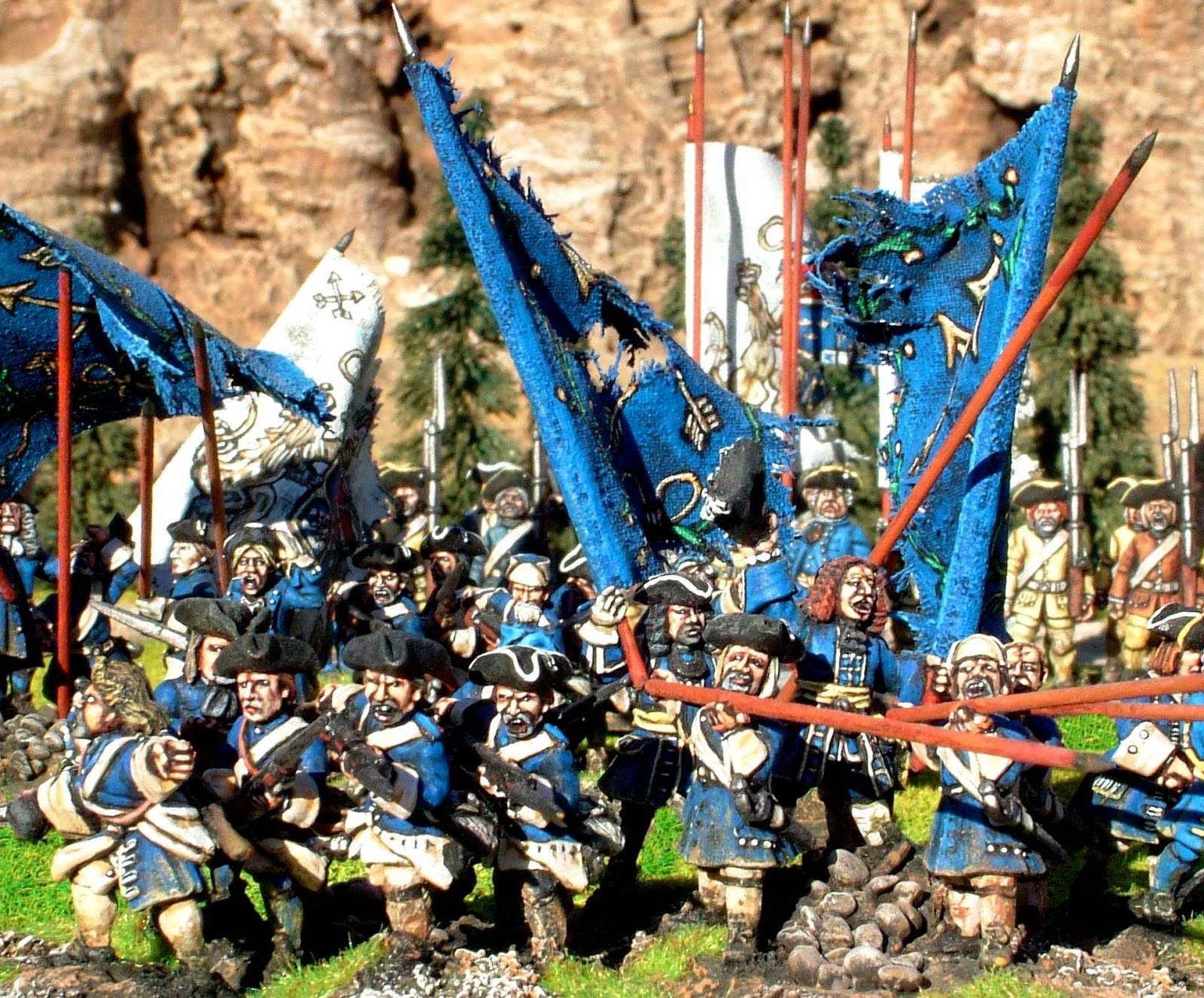Andreas introduces the context of this dramatic battle;
The
Swedish and Danish kingdoms had been fighting over Scania for decades before
the Great Northern War broke out. This struggle would come to an end with the Battle
of Helsingborg.
Background
The province of Scania, the most southern
part of modern Sweden, belonged to Denmark up until the peace of Roskilde in
1658. The peace was a result of the Swedish King Charles X Gustav first Danish War,
1657 to 1658. The Swedish demands were very harsh and Denmark had to give up
several core provinces and large areas of land. Among these were Halland,
Blekinge and Bohuslän but most importantly, Scania. The Danes did not forget
this humiliating peace and were intent on taking back the lost provinces.
It wasn’t until 1675 that a good opportunity
appeared. Sweden seemed weaker than ever with a young and inexperienced king on
the throne and an army and navy in shambles. The Danes landed in the vicinity
of Helsingborg with an army and conquered Scania within a few weeks, virtually
unopposed. But luck changed and in the following years the Swedes won a series
of important battles. Eventually the Danes had to leave Scania in 1679. Because
of Sweden’s alliance with France the peace treaty was very favorable to Sweden
even though Danish and Brandenburg troops occupied all of its German provinces.
In 1700 another opportunity appeared when
Denmark, Russia and Saxony-Poland created an alliance to challenge Swedish
supremacy around the Baltic Sea. Denmark was forced out of the alliance in the
same year after an unsuccessful campaign in Holstein and a Swedish surprise
attack on the Danish mainland. The Great Northern War, as the war became known,
continued being fought in northern Germany, Poland, the Baltic states, Finland
and in Russia. The Swedish armies won several spectacular victories over numerically
superior enemies but were unable to make much use of the victories. In 1709
disaster struck in the Ukrainian plains. The battle of Poltava was the largest
Swedish military disaster ever. The army was destroyed and the Swedish king,
Charles XII, had to flee to Turkey. The Danes didn’t waste any time and
declared war on October 18 the same year.
The
campaign in Skåne 1709/1710
The Danish fleet assembled outside of Råå,
just a few kilometers south of Helsingborg. Around 15, 000 soldiers were put
ashore on the beach without any Swedish opposition. Commanding the Danish
forces was Christian Ditlev Reventlow. His Swedish counterpart was Magnus
Stenbock, governor of Scania and general lieutenant in the army. Stenbock was a veteran of the earlier parts of
the war. He had participated in the battles of Narva and Kliszów. The forces at
his disposal were besides the garrisons at the different fortresses, just one cavalry
regiment. Understandably Stenbock couldn’t do much except call for
reinforcements.
In a matter of days the Danish army had
taken control of Helsingborg and most of central Scania. Only the fortresses of
Landskrona and Malmö held out. Stenbock decided to retreat to Kristianstad in
the northeast of Scania and then on to Växjö in Småland, about 100 kilometers
from the Scanian border. Reventlow’s plan was to attack the naval base of
Karlskrona but soon realized this wasn’t realistic as he lacked supplies,
artillery and soldiers to do this. At the same time as the Danish army was
resupplying in northeastern Scania and in Blekinge, Stenbock was building his
army in Växsjö. Almost daily new regiments, weapons and supplies arrived at the
camp and the soldiers were drilled at a nearby frozen lake.
By February 5, Stenbock’s army was ready to
march and after a few more regiments joined at Osby, the army crossed in to
Scania. In contrast to popular belief in Sweden the army wasn’t made up of
peasant boys and old men. The core was made up of experienced officers and the
rank and file was of good soldier material, even though a bit younger than
normal. As soon as the Swedish army marched in to Scania the Danish commander
Reventlow saw the danger of being trapped and losing his communications with
Denmark. The Danish army started to retreat west, towards Helsingborg. During
the march Reventlow got sick and had to return to Denmark, command was given to
Jörgen Rantzau. Rantzau was an experienced soldier and had served under
Marlborough during the War of the Grand Alliance and the War of the Spanish
Succession. He had participated in the battles of Blenheim and Oudenaarde where
he had commanded a Danish cavalry brigade.
Now, on the other hand, Rantzau commanded a
whole army and he continued to retreat towards Helsingborg. Once there, the
Danish army made camp northeast of the city and received much needed
reinforcements. The Swedish army was always one step behind the Danish army
during the retreat and didn’t arrive at Helsingborg until February 27. The army
made camp ten kilometers northeast of the city. The intent was to attack the
Danish army from the north the day after.


